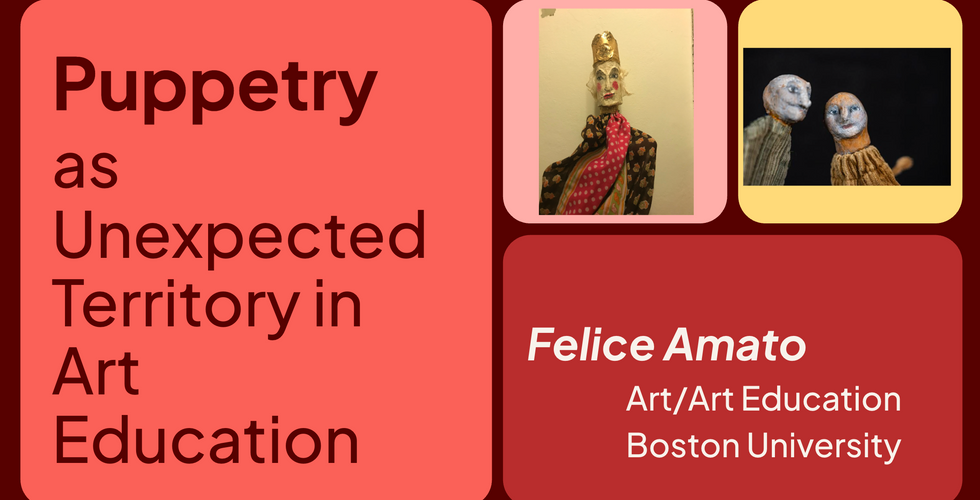Felice Amato
- Česká sekce INSEA

- Jun 27
- 2 min read
Updated: Oct 19
1.4 Puppetry as Unexpected Territory in Art Education (Paper)

Felice Amato – Boston University, MA, USA
Abstract:
Despite being a rich, ancient, and globally ubiquitous art form, puppetry is often an underexplored area in art education – one that offers a portal. In this talk, I provide an overview of the form and the field, elaborating on entry points and pathways to delve deeper into puppetry’s unexpected territories within the art classroom. As a puppetry scholar and art educator, I find myself at the overlapping margins of two fields: art and art education sometimes perceive my work to be in the domain of theatre, and theatre considers it art. While one encounters puppetry with some frequency in the art education classroom, seldom is there adequate weight, space, or time devoted to building up to the full richness of a puppetry experience. The puppet tends to remain an object. This is not only a missed opportunity for students to experience what makes puppets so powerful, but, without attuned animation, even important elements of the design cycle may not be fully explored. Puppetry is, in many ways, the ultimate interdisciplinary medium. As a crafted and animated image, it offers students new ways to think and feel. It can lead students into rewarding liminal artistic territories through its capacity for world-making and its ability to bridge multiple genres and ways of knowing and expressing. It fosters the precious sense of awe and reconnects both the animator and the viewer with the body. Arguments for centring puppetry in the curriculum include its timeliness and relevance: puppetry is experiencing a global surge in popularity. In contemporary art, we see an interdisciplinary turn, with the inclusion of material performance in many artists’ practice. Puppetry can be adapted and made accessible to all students. While easily paired with technology, its magic can also be achieved with a crumpled sheet of paper.
Download:













Comments